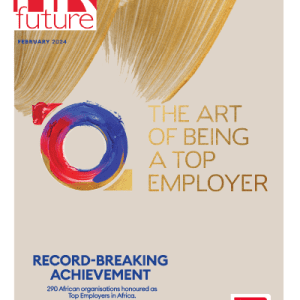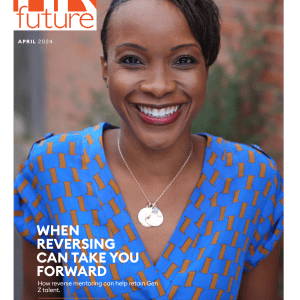Inclusion in the workplace should be a year-round priority for HR. But as we ring in another Pride Month, it’s time to reflect on the real, actionable initiatives in place—or lack thereof—that are lifting up LGBTQ+ workers. While many organizations are talking the talk, how many are actually walking the walk when it comes to cultivating socially responsible recruiting and hiring practices, growth and development, and working environments?
Rainbow washing is a real phenomenon and it’s simply not enough to effect real change. The term refers to companies that show support for the LGBTQ+ community through practices like adding rainbow colors to their marketing materials during Pride Month, without any real substantive work that helps the community. These actions are superficial and can actually cast a shadow on real, meaningful Pride efforts.
Companies are doing themselves a disservice by focusing on the “show” of support rather than the real thing. An inclusive company culture not only expands the diversity of your talent pool, but can ramp up productivity, offer different perspectives, and foster collaboration among employees.
The LGBTQ+ community in the US comprises nearly 14 million adults and is growing rapidly. Building an inclusive organization that prioritizes LGBTQ+ employees can lead to a 56% increase in job performance, a 50% reduction in turnover risk, and a 75% decrease in employee sick days, according to a recent BetterUp survey.
If you need to make a business case for LGBTQ+ inclusion, consider this – for the average Fortune 500 company, which employs about 62,000 people, improving retention of LGBTQ+ employees by just 5% could result in annual savings of nearly $4.2 million in turnover costs alone (2024 EY US LGBTQ+ Workplace Barometer). That’s a significant leap for any business.
Whether your LGBTQ+ initiatives hit the mark, need improvement, or you’re just getting started, it’s never too late to make a change. While there are many ways to get started, below are three actionable steps organizations can take to prioritize LGBTQ+ workers. These range from formal programs and technology investments to hard conversations and learning moments, and they can all lead to a better, more equitable work environment for all.
- Prioritize Belonging and Inclusivity
Most people will spend the majority of their adult lives at work. A sense of acceptance is vitally important to feeling safe, heard, and fulfilled professionally. So it should come as no surprise that employees who feel like they belong are 167% more likely to recommend their organization as a great place to work, according to BetterUp’s survey. On the flip side, the same survey revealed that one act of micro-exclusion can decrease an individual’s performance by 25%. Unfortunately, 44% of LGBTQ people reported they have quit a job due to a lack of acceptance.
Appreciating employees’ differences and understanding their unique needs can decrease feelings of isolation while driving a sense of belonging. But we can’t do this without an open dialogue. Focus on opening the lines of communication and normalizing differences. Creating formal “difference education programs” can help employees embrace their unique backgrounds and perspectives, empowering all of your employees—especially those who feel like outsiders.
- Lead by Example
Leadership is crucial to making workplace equity and diversity strategies succeed. If your executive team doesn’t demonstrate commitment, employees may doubt the authenticity of your diversity initiatives. Leaders need to put promises into action. Here are some ways they can do so.
First, offer benefits that are important to LGBTQ+ employees, such as adoption, fertility, and surrogacy assistance. Be sure to create—or create the space for community members to create—employee groups that unite workers through shared identities, experiences, and interests and support them with time, resources, and a budget.
While it’s important to remain conscious of rainbow washing, it’s still important to highlight the community in recruiting by showcasing diversity on your company webpage and social media and showcasing your efforts by making related policies and programs clear. Keep it authentic by shining the light on LGBTQ+ employees and their actual contributions to the company.
- Implement Nondiscriminatory Recruiting and Hiring Practices
Implementing equitable and nondiscriminatory recruiting practices is not just the right thing to do—it’s required by law. Still, 63% of LGBTQ+ people have reported facing employment discrimination (EduBirdie). Pay close attention to any potentially anti-LGBTQ+ workplace policies and procedures. For example, check for policies like parental leave that only covers birthing parents, dress codes, and required demographic questions that are not inclusive.
As for unconscious biases? This is where technology can be particularly useful. Artificial Intelligence (AI) that uses bias-removal practices. Here are a few ways you can use AI to help further your LGBTQ+ support.
- Use bias-free pre-hire assessments that focus on soft skills as the first step in your hiring process. This helps level the playing field for all applicants, open up your talent pool, and reduce the unconscious bias in resume screening.
- Implement AI-generated structured interview guides and video interviewing to ensure all candidate interviews follow the same format and all candidates are judged on the same criteria, minimizing the ways bias can creep in.
- Automate your reference checking to, again, ensure that all candidates are evaluated on the same criteria.
Regular diversity, equity, inclusion, and belonging (DEIB) training, especially for managers, who are often the first line of communication, is another tactic outside of technology that organizations can implement.
With June coming to a close, it may be tempting to deprioritize LGBTQ+ initiatives and carry on with business as usual until next year. While implementing LGBTQ+ strategies may not have immediate impacts, consider this: by 2030, just six years away, Gen Z will make up 30% of the workforce. They are also six times more likely than their Gen X counterparts to identify as LGBTQ+, according to the same EY report. Businesses can’t afford to overlook LGBTQ+ inclusion.
The companies that do the work now will be better positioned to create better work cultures and cast a wider net when it comes to attracting and retaining top talent. Creating a culture of belonging, showcasing dedication to the LGBTQ+ community, and focusing on equitable recruitment and hiring practices can greatly improve your overall DEIB initiatives and bottom line. And through listening, learning, and taking action, we can build a more supportive, inclusive workforce for all.
Jen Rifkin is the CCO at Cangrade.














